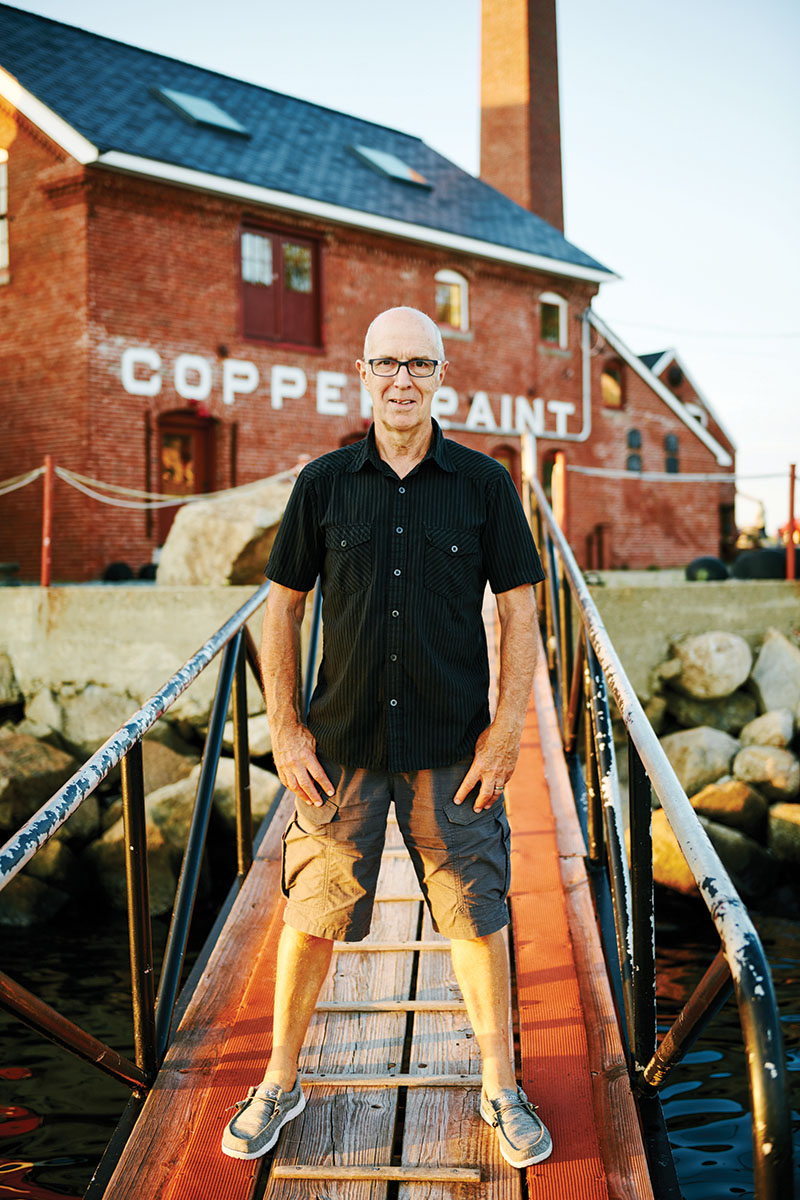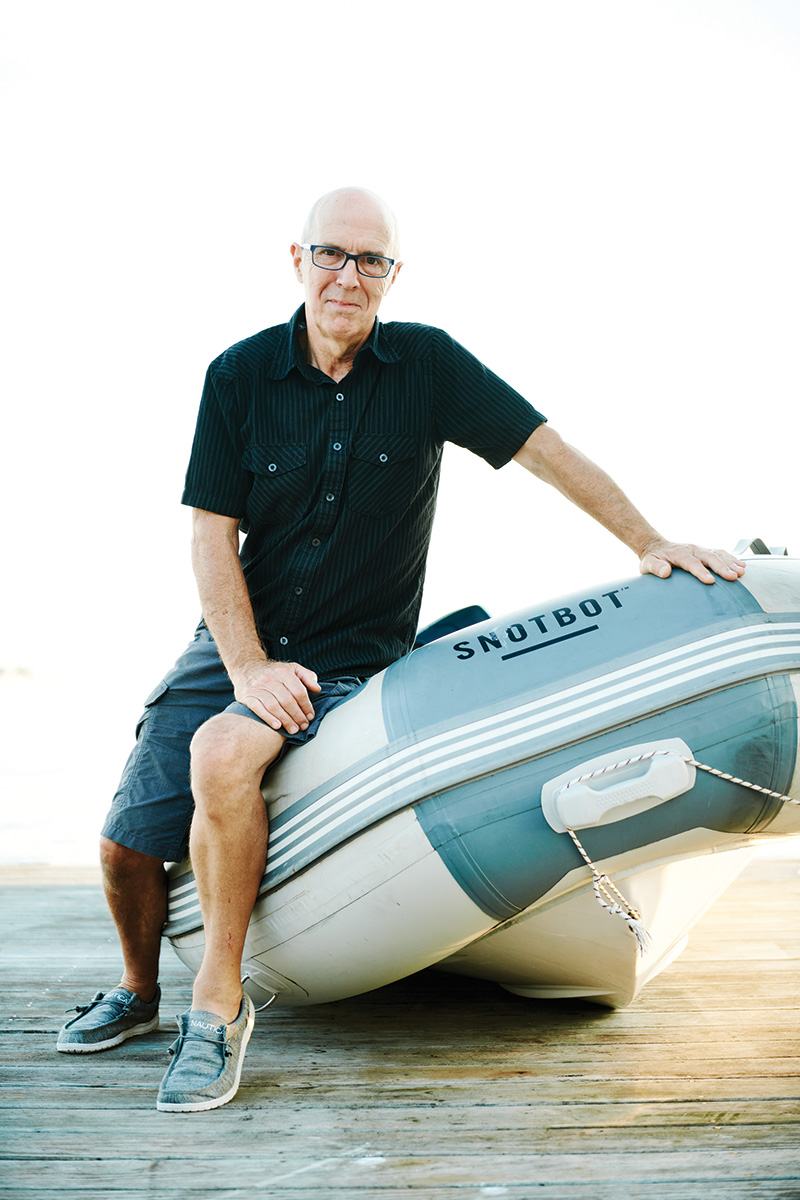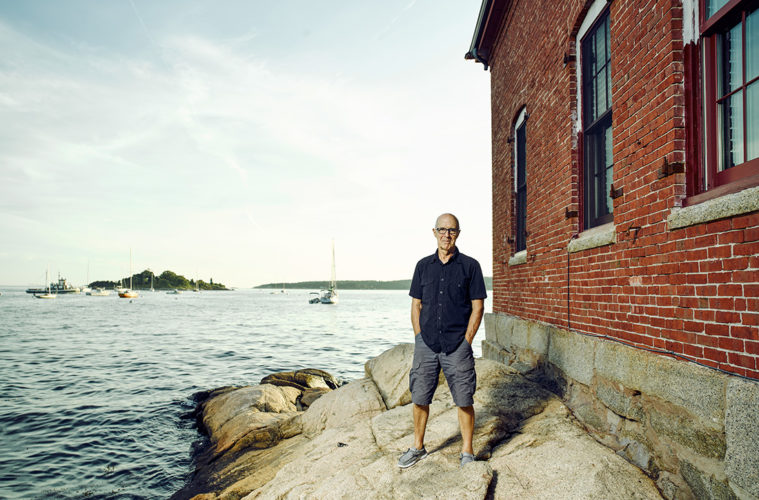Iain Kerr has to wrap up the conversation. He’s spent the past hour talking about ocean ecosystems, the interdependence of man and the sea, and the power of community, but now some dock pilings need to be caulked while the tide is high. So Kerr, chief executive of Gloucester’s Ocean Alliance and an internationally recognized innovator in the field of marine research, says farewell, grabs his tools, and gets to work.
For close to 13 years, Kerr has brought this combination of big, systemic thinking and hands-on action to his work researching whales, educating the public, restoring an iconic waterfront property in Gloucester, and collaborating with conservation-minded groups around the globe.
“We’re all working together on this encompassing vision to save the world,” Kerr says. He acknowledges that it sounds a little corny, but he’s also 100 percent serious.

This ambitious goal has been in the works since 1971, when Roger Payne, a whale biologist renowned for introducing the world to the beauty of humpback whale songs, founded Ocean Alliance with the goal of advancing whale research and conservation. In the half-century since, the group’s specific strategies have evolved and expanded, but the importance of understanding and protecting whales and their ocean homes has remained central to its mission.
Kerr joined the group 30 years ago. As he grew up in a tiny town in Cornwall, England, “nature was my playmate,” he says. He studied education at the University of London, but after graduation, he found it difficult to settle into a career. He found himself traveling and trying to figure out what came next.
When he was about 30, he met Payne on a beach in Argentina. The two got to talking, and eventually Payne offered Kerr a job captaining research vessels to the Galapagos. Kerr accepted, and has been with the Ocean Alliance ever since, taking on the role of chief executive in 1990.
Since then, the organization has been involved in a wide range of conservation and education efforts. In the 1990s, the group pioneered research into ocean pollution, which Payne felt was likely to be the next major threat to whale populations. In 2010, the alliance launched a five-year study of how pollution affected sperm whales in every ocean on the planet. And after the 2010 Deepwater Horizon oil spill in the Gulf of Mexico, Ocean Alliance spent years investigating the extent of marine pollution in the area.
It was during this research that Kerr was inspired to develop an entirely new approach to studying whales. Long a fan of remote-control planes and helicopters, Kerr wondered if specially outfitted drones could help researchers get closer to the animals to collect valuable biological samples. The result of this brainstorm was the whimsically named SnotBot, a drone equipped with tools that allow it to sample material from whales’ blowholes, gathering important data about the health of the animal and its ecosystem.
“I merged my hobby with my job,” Kerr says. “And, all modesty aside, I think it revolutionized whale research.”
Alongside its scientific activities, Ocean Alliance has also been pursuing a formidable historic redevelopment project. In 2008, the group bought Gloucester’s long-abandoned Tarr and Wonson Paint Factory, which once produced barnacle-resistant copper paint for use on boats. Since then, Kerr and his team have been attempting to transform the historic cluster of old buildings into a leading center for ocean research and maritime innovation.
The renovation and restoration work has been painstaking—it was five years before the organization could move into any of the buildings. But the long timeline is necessary, as Kerr concentrates on adapting the property to his organization’s needs while preserving its character.

“If you buy an icon because it’s an icon, you don’t mess it up,” he says.
The buildings’ exteriors look much as they always have, clad in brick and fading red clapboards, displaying the words “Copper Paint” in large white letters on the walls. Inside, one building has been transformed into an office and robotics labs where staff continually improve upon SnotBot’s functionality. An adjacent building has been turned into an open space that will be used for community meetings and other events.
And Kerr is far from done. He has started planning a new floating innovation center to be built in the water alongside the paint factory. The space will allow anyone from scientists to fishermen access to tools and materials they can use to make their marine invention ideas into reality. It is will be a fitting development for the city that was home to frozen food pioneer Clarence Birdseye and radio control inventor John Hays Hammond, Jr., Kerr says.
“This was one of America’s leading fishing ports,” he notes, “but it was also one of the greatest innovation ports.”
Though there is still more work ahead, Kerr is confident they’ve crossed an important threshold. He no longer needs to cajole people into understanding the Ocean Alliance’s future at the paint factory is more than just a maybe somewhat mad dream.
“When you walk around the site, you don’t need me to sell the vision to you anymore,” Kerr says. “You see it.”
CONTACT whale.org

